Join Jack Calbi as he shares his inspirational story of perseverance in the face of adversity. Hear how he recovered from his devastating injury and became a leader in the crypto space, using NFTs to finance groundbreaking medical research. Gain insights and advice from Jack as he candidly talks about his experience in the world of crypto and spinal cord injuries, offering support and guidance to those newly injured. Get inspired and learn how Jack is bravely overcoming life’s challenges and making a difference in the world!
Links
This following post was generated using AI via dubb.media 🤖
Transcript:
[0:00:00] Jack: And it's an image of my life changing injury that out of all the scans of a spinal cord in the world, this one definitely had a lot of impact. Unfortunately, not so good, but it's caused a lot of challenges in my life and for my family, although I will say those challenges have gotten me to a point where, you know, I'm a stronger person and so is everyone else around me.
[0:00:22] Rudy: I'm Rudy Dogum, and this is wholesome crypto. Here I speak with crypto experts, influencers, and entrepreneurs to find out what personally led them to the path of cryptocurrency. Welcome Jack Calvin to the wholesome Crypto podcast. Thank you so much for joining me today.
[0:00:38] Jack: Hey, glad to be here. Thanks for having me.
[0:00:40] Rudy: Yeah, I really appreciate you taking the time. And, yeah, I know you're working on a few projects now. I know you're part of the DS tire world and the Spinal Cord NFT project. That's something you're creating and working on. And before we go into everything about that, I'll have to learn a little bit more about Jack and what he was doing before even hearing about cryptocurrencies.
[0:00:59] Jack: Sure. Cryptocurrencies obviously knew in everyone's life to some degree, but I personally was not involved in crypto until maybe 2017. Just joining the hype of that bull run, getting in on some bitcoin and small amounts, nothing crazy. I was a college student at the time and was working through that. I was newly injured, which I'll get into that story in a bit. And that's the inspiration for my project, spinal Cord NFT. Around that time, I was just getting started, going deep into things like physical therapy and then also medical research, which I would be a participant in in one form or another, and also doing a little bit of fundraising for nonprofits. It would be another two or three years till I finished college, which was right at the beginning of the pandemic. So it's been a rocky few years, to say the least. And since then, having eventually finished school, crypto offered me a way to make some sort of a living, make some sort of a network without relying on larger institutions who were not willing to take a gamble on me at that time, at a time of extreme world change. Right, yeah.
[0:02:12] Rudy: They weren't taking anybody in at all for anything other than COVID. If you had some of those injuries, it was tough to get in.
[0:02:18] Jack: Exactly, yeah. A unique situation on top of a unique situation. From there. I saw opportunity in the crypto space. I really liked some of the ethos of personal sovereignty ownership. I thought a lot of the stuff that I learned about during that time, especially around 2020, was projects like Ocean Protocol that were offering marketplace for data and just for data science in general. Obviously, there was some financial incentive to get involved, but also a lot of curiosity and a lot of passion of course.
[0:02:51] Rudy: And when you first heard about it, what was that platform you heard? Was it from a friend or just the Internet?
[0:02:57] Jack: Yeah, I had a friend who was early in the crypto movement who said to me, hey, give this a shot. He gave me some pointers. My good friend, I won't name him, but works for a big analytics firm in crypto space. It's been kind of cool seeing his journey. I'm obviously on my own path here as well, but I'm applying crypto in my own way, which I think there's a lot of use cases, and I think we need to rely on those solid use cases at least, because we've obviously seen that some projects can fall apart, but others will stand the test.
[0:03:30] Rudy: Absolutely.
[0:03:31] Jack: Yeah.
[0:03:31] Rudy: It's tough because when you first hear about cryptocurrencies, it's like, what do you think of it? It's just like money, I guess. I could move money between people. That's awesome. But did you get into it before the NFT and D Five summer, I guess? Is that when you first started learning about it?
[0:03:49] Jack: I was watching from the sidelines. I had invested in a few projects already, but hadn't figured out staking, hadn't figured out exactly how I would land in the NFT space at all. But that's also where I saw my chance to say if this can be a combination of especially NFT digital art, which I make my own art on my side. On the side. Seeing that people could take ownership of digital art and Monetize, it was pretty powerful.
[0:04:15] Rudy: I was like, what kind of art do you make on the side?
[0:04:18] Jack: Let's see. I produce music, I do photography, I make collage, I paint.
[0:04:24] Rudy: Interesting.
[0:04:25] Jack: Yeah. My collage projects involve old comic books. Usually not very good condition comic books. I cut them up and I can send you all a whole bunch of them after this call.
[0:04:37] Rudy: That's awesome. And I guess it's something that you're, like, more passionate about and driven into. Were you always into tech at all? Like new age tech.
[0:04:45] Jack: Yeah, I was a geography student and I studied GIS, which is geospatial data, software analytics, stuff like that. That's kind of my first dabbling in the tech space. I also enjoy the modern technologies for the community of people with my condition. So that was another big interest of mine, still is and will be. And there's a lot of exciting news to share on that front as well. But yeah, I would say technology is definitely a big interest, and with tech comes good design. I was an artist before, but I would say after I got injured, I doubled down because it's therapeutic, it's pleasant, it's a way to express yourself.
[0:05:23] Rudy: Yeah. And it's definitely an amazing way to spend time with your mind. Some people hate it. Some people just hate being alone with their head, with their mind. And I'm like, it's the best part. I love being alone with my mind. It's where I get to actually talk to myself a little bit without so much noise around me.
[0:05:38] Jack: Yeah, good to get into that flow state.
[0:05:40] Rudy: So, yeah, the science world is definitely something you're familiar with and interested in. And I know we met at the DSAI Boston event, but I also have to learn how you got into DSAI and what you're doing at DSAI World.
[0:05:52] Jack: Sure. DSAI World I got involved with in probably November of last year, I met Josh, the founder, and that was when my NFT project was in its infancy. It was just a concept. He kind of gave me some insight on what it would take to build this kind of project and then offered to post the launch of it on his platform, DCI World. Right. It took a while to reconnect with him after that winter, but I then began trials in Boston, where I was a participant in a study for medical device. Also was just exploring. Okay, I see that DSI is a thing first. Getting that through your head, you see. Okay, now there's all the possibilities beyond that. Right. I suppose what I was doing was a form of decentralized science. Not necessarily how other people are approaching it, but my own, which is cool. So as I was pulling all the pieces together for my NFT project, I saw that he was building the platform and the dashboard. So in tandem, we kind of agreed, okay, we're going to launch this NFT project together, but there's a whole lot of tasks on the platform ends that I could help with.
[0:07:01] Jack: It's been really great working with them. With Josh, we've got a core team of seven who are a number of us are either scientists or just scientists, science enthusiasts, all kind of building the project in our own way, sometimes without solid structure, but I think it's produced.
[0:07:18] Rudy: A pretty it's a start up.
[0:07:20] Jack: Yeah. It's an amoeba of going in different shapes and directions, and it's been exciting. It gave me the chance to go to DSAI Boston, which was an exciting event held at MIT. That's where we met. Yeah, it's been cool. I built out the interactive web map where any project that's listed, we pin it to a map where you can search the globe and see what's happening in the world of decentralized science.
[0:07:43] Rudy: It's such an amazing industry. Like, going to that event was just eye opening. Like, okay, there's a whole other decentralized world I didn't even know needed decentralization. I mean, after going there, it makes complete sense, and I'm like, wow, I didn't know the science world was so essentialized and so difficult to share among other scientists without, like, paywalls, like, literal pay walls to share your research and information. I'm like, the science is supposed to be free. It's supposed to be educated, not supposed to be. But most times, scientists enjoy just sharing what they learn without anything you'd hope.
[0:08:13] Jack: That if you discover something that the world gets to know about it, you don't do the research to hide it.
[0:08:20] Rudy: Exactly. But that's when money comes into play. So it's a tough battle.
[0:08:24] Jack: I thought, to speak on it. The CSI Boston event, there's a ton that I got to learn myself. And some of the projects that are doing object based, blockchain based publishing, I thought some of those were the coolest. I thought to myself, this is a problem that people obviously you can fund science, but I think the publishing and collaborating and peer reviewing on the blockchain is really interesting.
[0:08:46] Rudy: Absolutely. And it's such a perfect application. Oh, yeah, that makes complete sense. Obviously this is where it should have been placed a long time ago, but I'm glad it's happening and I hope we have a summer of DSI summer instead of like D Five. But that would be great.
[0:09:00] Jack: Cool.
[0:09:01] Rudy: So you're in this space and you're also working on Spinal Cord NFT, which is I'll let you go into details about it, but I love to learn, I guess, or hear your story of how that all happened and where were you in life before your injury and then how the injury happened and the thought process in getting into Spinal Cord NFT.
[0:09:19] Jack: Absolutely. So my back story, the year was 2017. I was a student at Appleach and State University in North Carolina. It's a medium sized state school in the mountains. It's beautiful. Tons of outdoor recreation opportunities. I was studying GIS at the time. It was the week before midterms and it was a Tuesday afternoon. I got out of the lab and had been working and doing homework, preparing for tests, and I just needed to destress. So I went for a ride on a mountain bike, which was something I did frequently. I was wearing my helmet, which is always a good thing. So you can let your friends wear your helmet. I still have my head, which is great. I went down a trail. There was an imperfection on the trail.
[0:10:02] Jack: It was not the craziest thing I've done in the world going down it, but apparently it didn't work out for me. I lost control for a second. I tumbled and I broke my Csix vertebrae on that tumble and I was instantly paralyzed from the chest down. And I was flown to Johnson City Medical in a helicopter from there, and I spent the next ten days in the ICU there and then traveled to Boston where I spent the rest of my time in hospital, which was spaulding rehab in Charlestown. I came back here because my family is based in New England. We were going to have a hard time setting up shop and getting myself back on track from a distance in the Southeast. That was, I guess, the beginning of my story.
[0:10:46] Rudy: Were you with anybody?
[0:10:48] Jack: I was not, no. But I was on a pretty public green way. So someone came to help me. Basically, immediately I was conscious and I remained calm. It was shocking, but I had experience in outdoor rescue before, and I feel like somehow my own training had kicked. In the next few years after that, I would be doing a lot of PT. I would do clinical trials. I got involved with the Christopher Reeve Foundation, which funds medical research, spinal cord injury. And there's a lot of different cool, promising George, whether it's medicine or medical devices coming along. And I would say that's how I got further into the science world. And not something I studied, but something I was forced into, essentially. There's the connection to the science world. It was until probably the summer two things happened, the summer of 2000 and 22,021. I was going in for follow up exams to take a look at my injury. And they said, can you get us the original medical scams from the day you got hurt?
[0:11:51] Jack: And I said, yeah, I can get those. What is odd to me, though, is that no one ever showed them to me when I got hurt.
[0:11:57] Rudy: That's ridiculous.
[0:11:59] Jack: Yeah. I don't know how that slipped through the cracks. There were a lot of reasons that my eyes were opened to the medical system in general, that being one of them. I called the medical center and they sent me a disk and I uploaded onto my computer and there's many dozens of scans that were taken, whether they were X rays, Cat scans, MRIs, and it's just fascinating to look at, honestly. And it's an image of my life changing injury that out of all the scans of a spinal cord in the world, this one definitely had a lot of impact. Unfortunately, not so good. But it's caused a lot of challenges in my life and for my family. Although I will say those challenges have gotten me to a point where I'm a stronger person and so is everyone else around me.
[0:12:43] Rudy: Yeah. And it's really incredible how you were able to take your injury and go with it. You've said, this is my new life and I'm going to use every power that I have to either help create more research for your specific types of injury, spinal cord injuries. You're incorporating a new technology and a new type of working to help distribute what you have gone through. I'm sure it's not easy, it's demotivating to have that injury, but you just took it and straded with it. So thank you for doing that and thank you for helping others that are in that position.
[0:13:14] Jack: Absolutely. Yeah. Thank you for the acknowledgment. Yeah.
[0:13:17] Rudy: I'd love to learn more about, again, the Spinal Cord and Ft project. And I know you're actually selling those MRIs of yours online, so it's pretty cool. But yeah, let me know a little bit more about the project is doing and how you're building it.
[0:13:31] Jack: Yeah. So I would call it a Web three experiment. It's just me working on the project. It's getting my hands dirty learning how this kind of digital system works. Right. Obviously, I had fundraising for the Reef Foundation, also turned my ears towards fundraising through blockchain or building a dow. I don't know that I was ready or even am currently ready to build a dow myself, but this was my application and saying, okay, these are these artifacts that came out of my injury, these digital files of my Cascans, MRIs, et cetera. And can we create or at least consider this digital art enough to sell so that art funds research and kind of wanted to make it automated so that people can trust that when they buy it, that the address in the code is delivering to the good cause. That was a big part of our project, or my project the first many months, was just figuring out how the software and how solidity works. Working with Josh and saying, how do we actually launch a product like this? And it's been a cool experiment. And yeah, building an NFT project is hard, especially as one person. And as you were saying how to keep your mental in check while you're doing that, I really just thought of it as an experiment so that if the experiment fails, it's a learning experience either way. And I can pivot, right?
[0:14:55] Rudy: Exactly. That's like a solid advice to anyone building anything, any entrepreneur. You're going to fail eventually or somehow. But it's the learning that you take from those failings is what really helps you succeed and grow. And you're putting your words to play like you are learning and growing with what you're doing and experimenting and keep pushing out, I guess, what you've developed in that space. Yeah. Learning stability is not easy. JavaScript, I know the basics, but getting into it, launching something, that's incredible.
[0:15:23] Jack: Yeah. Thank you. One of the angles that I like to take with this project is that for a lot of medical problems or catastrophic diagnosis that people face, they might turn to Go fund me for assistance in either like, research or even just medical bills. I'm fortunate enough to never have had to do something like that. But I was thinking, what if you can build this NFT project of somehow your medical data, your medical imagery? It helps to have imagery because people resonate with that and people can collect it and they're open. See, it's cool. So if we could create an alternative to a Go fund me where you could basically sponsor my experience or take an artifact from that experience and I can share it with others and then also deliver funds to a cause. And recipient of my funds is the Inspire Lab, which I can share with you about. The Inspire Lab is part of Spalding Rehab hospital they're set up in Cambridge, which is, I think, more of their outpatient division of the hospital. They've gotten a number of locations throughout Massachusetts. I was the person to basically call them and say, hey, if you guys have a digital wallet, I'll donate to it. And that got them interested quick, right? So I spoke with the people at their giving office and asked them to set up their wallet, which they were already in the process of doing, but no one had ever come forward to do anything about it. They got it set up.
[0:16:53] Jack: I donated, and I'm proud to say I was the first to give cryptocurrency to any mass general hospital that's well.
[0:17:01] Rudy: For such a huge hospital, you'd think they're on. I know they heard of cryptocurrencies and bitcoin stuff, but you would think someone in the tech team knows how to create digital wallet and is ready to accept donations. But it's fine. It takes a phone call. It's just a simple phone call from somebody and say, hey, I can donate with crypto. Can you accept that?
[0:17:20] Jack: Yeah.
[0:17:20] Rudy: What a start.
[0:17:21] Jack: They've been excited and happy to work with me. Everything has been easy, and we can even post their wallet address and information description that you put out on this podcast. But I chose that lab, specifically the Inspire Lab, because that's where I had done clinical trials before. The people there are working on some really great things, and I'm almost certain they're working on some things in the future that I'll benefit from. So it was just the right place, the right time, and a team that I really believed in. And that gives me a little bit of choice as far as if you donate to this kind of cause, it's not then governed by another group of people. I got to decide which lab gets to use the funds.
[0:18:02] Rudy: I went to a specific lab. That's really cool. That's awesome.
[0:18:06] Jack: And I'll speak on some of the barriers of, say, a lot of the research in any medical or patient community might be funded through a nonprofit, and nonprofits for medical causes have all sorts of their own problems as far as managing the money. Not that I've had any poor experiences. I'm just saying it gives patients some autonomy.
[0:18:30] Rudy: Absolutely.
[0:18:31] Jack: Really important.
[0:18:32] Rudy: Absolutely. What are you excited that they're working on whatever clinical trials that you're allowed to talk about?
[0:18:38] Jack: Yes, there are some things I can't disclose, but there's plenty I can. I tested a medical device that applies electric stimulation to the site of injury to regrow nerve connections, and that was a non invasive device developed by a company based out of Switzerland. And the second iteration of their product will be an internal. There's a lot of projects that call themselves brain computer interfaces. I would call this a spine computer interface, but essentially it's an implant into your spinal cord that they have high resolution channels of electricity targeted at muscle groups. And what they're trying to do is activate those muscles and time it with video, and they're able to use AI to synchronize the simulation, stuff like that.
[0:19:26] Rudy: That's amazing.
[0:19:26] Jack: Yeah, very exciting stuff. I can give you some links that will be the future iteration of the product I tested. I expect that to be available in the next five years.
[0:19:36] Rudy: Probably the simulation for nerve growth. And that's just the site of the injury. And I guess in your case, when you broke your vertebrae, is it the nerves what's causing the paralysis? Or is it I'm not medically literate very well, so I need some help understanding that too.
[0:19:52] Jack: Yeah. There's a number of ways that it can affect you and it really is dependent on your injury. I've seen so many different outcomes based on different how you get hurt is a big factor. What your injury looks like is a big factor. Right. I'm fortunate to have an incomplete injury, and a majority of spinal cord injuries are incomplete, meaning there is some either sensory or motor connection spared. Although just because it's incomplete doesn't mean life is easy. I would say for a lot of the incomplete, it's more of rather than the nerves being destroyed and the spinal cord being severed. It's like your spinal cord goes through like a rapid degradation where a lot of, like, I guess you call it gray matter or scar tissue is a better way to describe it, where throughout the connections from your brain to your limbs, electricity is going through, but not nearly enough for anything to activate. When I'm using a nerve excitation device, the idea is kind of to up the amount of electricity in the system and break down some of that nerve tissue, or at least that scar tissue, and also just promote the growth of new nerve cells which grow slowly and you don't make a lot of new ones. It's just that extra excitation and to hopefully get some activation or changes.
[0:21:12] Rudy: It's still experimental, so it sounds like there's a long process on understanding its full effects and how well it works. But did you see any progress so far?
[0:21:20] Jack: I have issues with my fine motor control in my hands that I would say improved sweet. With the external device. I also had some autonomic function change, which one being that I didn't sweat below my injury before testing this product, and now I do, which is pretty interesting for whatever reason.
[0:21:39] Rudy: That's what we expected.
[0:21:41] Jack: Yeah. They reactivated and it was distinct. During the trial time, I was having dreams where I was sweating and I'd wake up and I was actually sweating. And after a few years of not, we notice, well, that's wild.
[0:21:55] Rudy: I didn't know that can happen. But that's pretty interesting that it started happening again.
[0:21:58] Jack: Totally unexpected.
[0:22:00] Rudy: Yeah. You don't know the results are going to hold, right? It is results. So it's good.
[0:22:04] Jack: Right.
[0:22:05] Rudy: So now when someone purchases one of your spinal cord NFTs, this goes into helping fund research, such as this type of research, because I know the NFT marketplace is nuts. Like, people are trying to sell whatever they can to make some money really quick. But if people start reselling your NFTs, do the royalties go? Is there like, royalty that go into the research again? So if it's worth millions of dollars sweet.
[0:22:30] Jack: That's coded in as well. So that the same wallet address receives initial sales and royalties. I'm taking no cut of it. PCI World receives a small cut of the initial minting because they helped with coding and launching and services like that. But yeah, this is a completely altruistic project and again, an experiment, my own learning process.
[0:22:52] Rudy: So now that you've been in the crypto space for a bit, I want to know what is your crypto pet peeve?
[0:22:58] Jack: My pet peeve? Let's see. I'm interested.
[0:23:02] Rudy: It's possible.
[0:23:03] Jack: So many yeah, there's a lot I would like to see some stability in the space. I think legitimacy. And I know where we can be, like, anti institutional, although I think there's a lot of room for institutions to be part of the crypto space and not necessarily institutionalizing it, but kind of getting all the mess out of the way, especially this year, what we saw with Terra luna, different exchanges and controversies and shady dealings. Because I think you know best. You've seen a lot of great wholesome activity happening on the blockchain and people using this for good, and I think there's a ton of opportunity for that. And it would be nice that the general public wasn't necessarily thinking crypto was a scam based on the activity of a few. Right? Yeah, I guess. It doesn't bother me. I am a little interested when people are like maximalists in one versus another. And I'm always curious. I think a lot of ideology and tribalism happens in the crypto space, which maybe it might be we're more secular society and people are like their religions, so they like their chains. I don't know.
[0:24:12] Rudy: That's how I feel it too, man. Because we're all human at the end of the day, and that's just how humans behave and act as they like to be in a part of a tribe, trying to push their own agenda, whatever suits them best. If I had 1000 bitcoin, I'd probably be more towards a bitcoin max just because or at least my emotional state would be. I want bitcoin to succeed because it's where most of my stack is, or mostly in ethereum, so I want that to increase. Or if I had like 100,000 cardano, I definitely want cardano to succeed because that's just where my stack is. It's hard to just keep yourself in a space where you're not biased towards anything. You're kind of just let the best technology win.
[0:24:51] Jack: Sure. Any project succeeding is probably going to help the system no matter what. I'm pretty diversified myself.
[0:24:59] Rudy: Yeah, we don't know what's going to happen. The road is crazy over the past few years. So I guess I like to also learn if anyone else that's listening and also might be dealing with any sort of injury or working in the medical space and kind of tell me what you're doing, what's the best way to reach out to you and hear from you and I guess learn from your.
[0:25:18] Jack: Sure. Do you mean in the crypto space in general, or like the disability space?
[0:25:24] Rudy: I guess all the above.
[0:25:25] Jack: I mean, for someone newly injured, I'm not always one to give advice, but I would maybe say shorten your expectation of time and goals and horizons because when you're hurt, you're weakened and it takes a long time to figure yourself out after something like that. And the best thing to do is just stay active, keep your mind active and get involved. It's hard to speak on specific situations, but you'll really see how resilient you are. It's crazy. As far as the crypto space, I would encourage people to use it for positive causes like this. It's been really cool to plug into the DSI space, which in some ways, science is one thing. And then I think biotech and medical tech are kind of the more specific. But even big players in the DSI world, or DSI space, rather. I would encourage people to see what there is out there and start getting involved with these dows. And if you have a specific medical cause, I almost feel like there could be a consulting firm or something like that. And I know there's numbers of them building right now as we speak. See what there is out there. You don't need to rely on a nonprofit to get research done necessarily. And your community is powerful.
[0:26:42] Rudy: That's amazing. And you're right, community is a huge thing, especially in the crypto space, because it's what launched it, it's what created it, it's what started it, and it's what's growing. It's the community. And lots of IFT projects are so successful because of a good, strong community. I'm excited to keep watching you build your community. One of my last final questions I could ask her one is what is your favorite wholesome crypto moment? Something that happened in the space that just made you feel good or proud to be part of crypto?
[0:27:12] Jack: Most recently, the Git coin round for the DSI space was really cool learning about quadratic funding, seeing all these open source projects get funding, the amount that they were able to match through their matching treasury. Are you familiar with quadratic funding?
[0:27:28] Rudy: I am. I had Kevin Oakie on the show, so he explained it to me a little bit too.
[0:27:32] Jack: Yeah, I'm no expert myself, but for anyone listening, there's extra matching based on the number of participants, not just the dollars that you generate or donate. Yeah, it was cool to see a lot of public good and science projects get a lot of good capital to move forward and build. I really like their platform.
[0:27:50] Rudy: Yeah, it's. Super useful, and it truly does help small projects gain a substantial funding amount just to start working on their project. Because like you said, there's a project out there that has ten $1 contributions. You'll end up having more than one person who contributes $10 just because of the amount of interest there is in that project. So it doesn't base you off, like, oh, only small amounts are being projected or put into your project, because maybe your community isn't, like, wealthy, but if you had one wealthy billionaire who wants to invest in you or VC, it's hard to get up at quadratic funding. So it's pretty interesting how they do. It's nice. It's helpful and kind of fare towards everyone's situation. So before we end off, I wanted to know if there's anything you want to leave our audience with or any exciting upcoming projects that you have in mind or where they can find you.
[0:28:40] Jack: Well, they can find me just out here building. If anyone wants to reach me. My name is Jack CalBY. You can find me on Twitter. I'm easy to reach and happy to get involved. It was really great meeting you and your brother at DSI Boston. It was exciting to finally be in person as something long pandemic. But if you guys want to check out my project, it's spinal cordnft.com. You can also check out the platform we launched on, and that's DSI World. DSI World. And we're doing a lot of cool things over there, so check it out and get involved in whatever way you want.
[0:29:17] Rudy: I'm tough I put all those links in the notes, so I want to click them and check them out again. Thank you so much, Jack. Thank you so much for sharing your story and contributing in a positive, public good way and using the crypto ecosystem that not only benefits you, but also everyone around you and the industry in the world in itself.
[0:29:37] Jack: Sure. Hey, great being on here. Really appreciate it. A pleasure. 






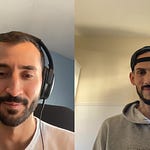

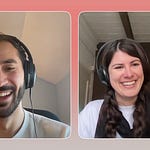

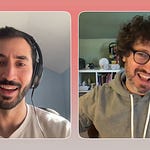
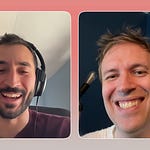
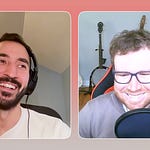
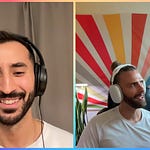
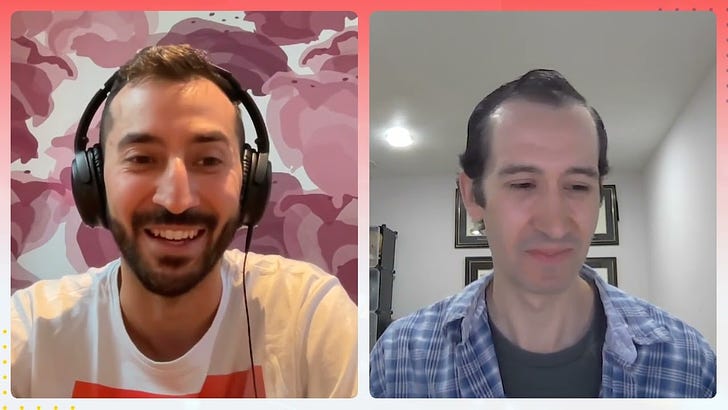
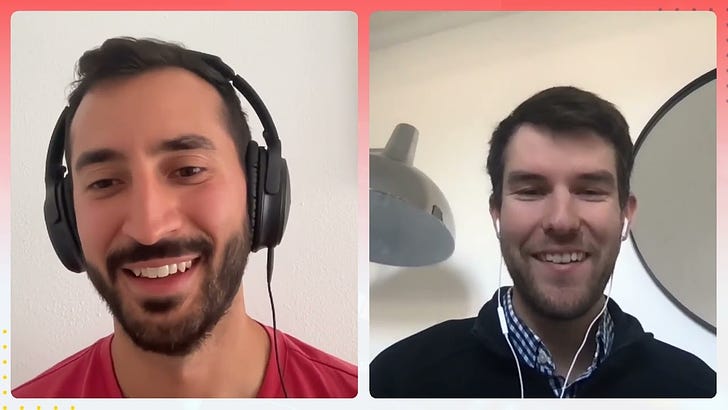
Jack Calbi - From Spinal Cord Injury to Crypto Pioneer